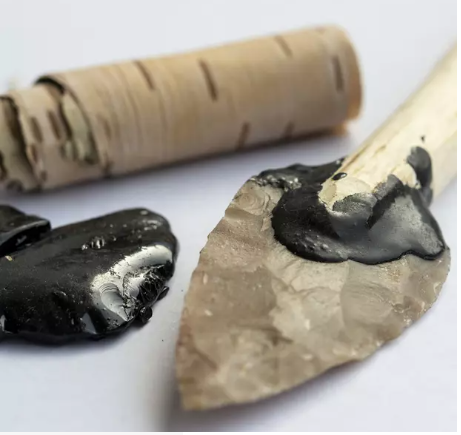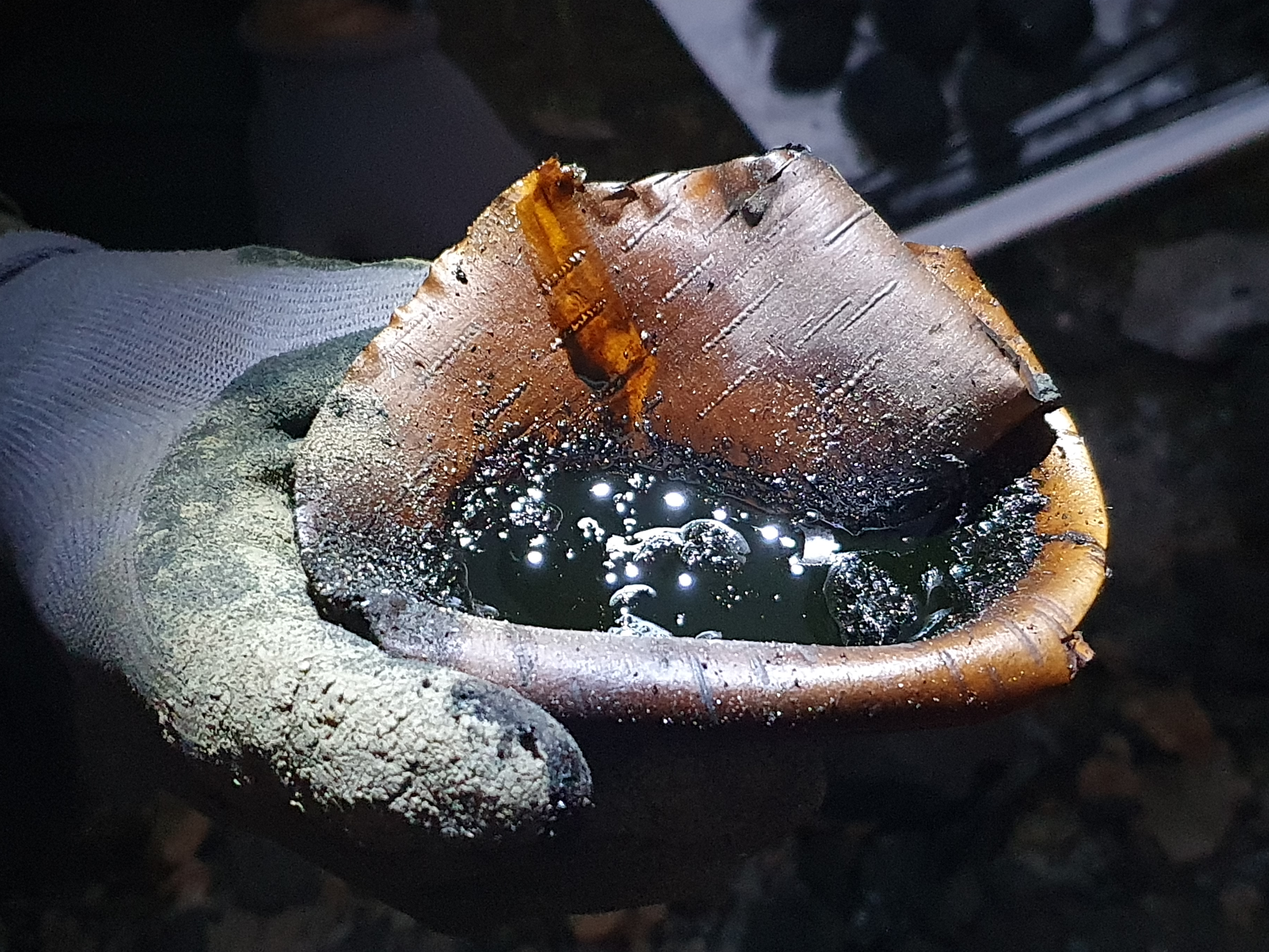The Neanderthals made a glue out of birch bark tar to stick tools together; new studies confirm this required skills anthropologists have not been sure our extinct relatives had. If there was any doubt that the use of the term “Neanderthal” to insult someone’s intelligence was wrong, this should put it to rest.
When we talk about early technologies that allowed humans to master their environment, we usually refer to fire or the wheel. Glue-making is much less obvious, but crucial. By making it possible to stick components of tools together it helped our ancestors survive in otherwise impossible circumstances, and eventually turn them to their needs.
Neanderthals developed the same capacity, producing a sticky tar out of the bark of birch trees, apparently well before modern humans invented their own adhesives. Not only that, but a 47,000-year-old flint retrieved from the bottom of the North Sea proves that even in areas where conditions would have only allowed very small groups of Neanderthals to persist, glue-making industry occurred.

Tar’s capacity to stick flint spearheads to wooden handles probably represented one of its first uses.
Image credit: Delft University of Technology
Dr Paul Kozowyk of the Delft University of Technology leads a team trying to work out the stages Neanderthals must have gone through to make tar, and what this can tell us about their intelligence and society. Kozowyk notes the tar is the oldest example we know of the creation of a material not found in nature by members of the human family, something we have got rather fond of since.
The question is complicated by the fact there are several ways to turn birch bark into tar. Earlier this year a study produced evidence for low-oxygen tar production, which demonstrates a sophisticated understanding of combustion processes. However, Kozowyk and colleagues think we don’t need to accept these conclusions about how the tar was made to know Neanderthals were smart – alternative technologies were intellectually demanding in other ways.
Tar-making is a more complex process than lighting fires. Most methods require an astonishing amount of bark to produce useful quantities of tar. Even once a Neanderthal genius worked out how to do it, those who copied him or her would have needed considerable forethought to collect the necessary quantities of bark. A more efficient method is known, but is so complex it would speak even more highly of the intelligence of those who came up with it.
“Neanderthals used, at least on some occasions, a complex production process to make tar. To do that they needed ways to deal with a lot of information, like understanding and a way to transmit information very well,” said team member Dr Sebastian Fajardo in a statement.

Tar produced using the “raised structure” technique, the most efficient, but complicated, process Neanderthals might have adopted.
Image credit: Delft University of Technology
Kozowyk and colleagues explored the so-called “condensation technique”, a likely candidate for the first method used since it uses fewer materials than alternatives. This involves scraping material off rocks placed next to burning bark. Although simple when done on a small scale, they showed that to produce practical quantities several assemblies had to be run in parallel.
“For example, if tar is scraped and stored while another roll of bark extinguishes, then that bark will need to be reignited. If tar is left too long on the surface of one stone, it may burn away, reducing the yield efficiency of the process,” the team write in the first of two papers.
To do this the tar-makers would have needed considerable patience, and a capacity to work together at a complex task. Ask a project manager how hard it is to get modern humans to do that.
“We don’t prove that they were using a particular method, but our findings show that regardless of the methods employed, prehistoric tar making likely required a level of information processing that extended beyond simple behaviours,” Kozowyk added.
The fact tar use was so widespread among Neanderthals also shows that the knowledge of how to make it dispersed through the population, presumably including the teamwork required.
The work contradicts the idea that modern humans displaced Neanderthals because we were more technologically innovative.
The work comes after a recent challenge to claims Neanderthals were responsible for the “Flower Burial”, which would have indicated funerary rites and the accompanying concept of mortality.
The two studies are published in Scientific Reports, here and here.
Source Link: Making Of Birch Tar Proves Neanderthal Intelligence And Cooperation